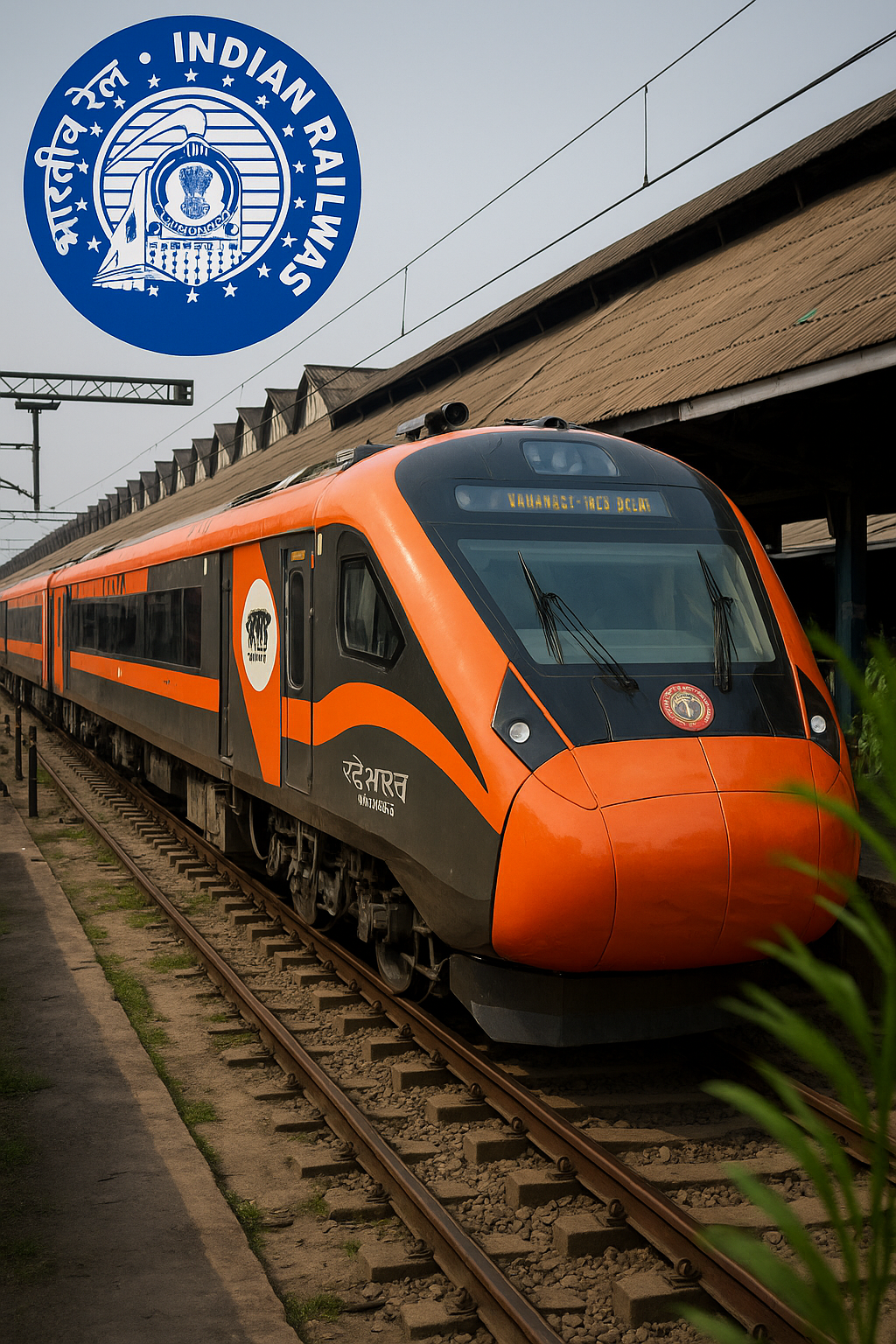Railway Ministry Clarifies on Bullet Train Compatibility
Union Railway Minister Ashwini Vaishnaw on Saturday firmly clarified that Vande Bharat trains will not run on the Mumbai-Ahmedabad bullet train corridor, ending weeks of speculation stirred by sections of the media. Speaking at Thane, Maharashtra, during the breakthrough of a 21-km tunnel being constructed for the Mumbai-Ahmedabad High-Speed Rail (MAHSR) project, Vaishnaw explained that the two train systems are entirely different and incompatible.
The 508-km bullet train corridor is being developed with Japanese collaboration and will deploy imported E-10 series trains, considered among the most advanced high-speed models globally. According to the minister, while Vande Bharat trains are capable of higher speeds than regular express services, they cannot be adapted to the specialized tracks, signalling, and safety systems of the bullet train project.
End to Speculation About Vande Bharat’s Role
The minister’s clarification comes after months of reports speculating that India’s indigenous Vande Bharat trains—currently being upgraded to reach speeds of 250 kmph—would run on the Mumbai-Ahmedabad route. These assumptions gained traction last year when Bharat Earth Movers Limited (BEML) was tasked with designing and manufacturing India’s first high-speed Vande Bharat model.
However, Vaishnaw made it clear that while BEML’s high-speed train development remains underway, the Mumbai-Ahmedabad corridor is reserved exclusively for the Japanese E-10 models. “Both systems are very different, and compatibility is not possible. This corridor will only have bullet trains designed for such infrastructure,” he stated.
9) 🔩 Mumbai–Ahmedabad Bullet Train project: 508 km | 320 km/h speed
Engineering firsts 👇
🚅90% elevated corridor via Full Span Launching Method
🚅21 km tunnel with India’s 1st 7 km undersea stretch
🚅BKC underground station ~100 ft deep. pic.twitter.com/uh2CJUt390— Ashwini Vaishnaw (@AshwiniVaishnaw) September 15, 2025
India-Japan Collaboration for High-Speed Rail
The Mumbai-Ahmedabad High-Speed Rail project, India’s first bullet train initiative, is being executed with Japanese financial and technical support. Vaishnaw confirmed that teams from Japan, including a vice minister, recently visited Delhi to inspect project progress and expressed satisfaction with the ongoing construction.
The E-10 series, which will be imported for this project, represents Japan’s latest technology in passenger comfort, aerodynamics, and safety. These trains are expected to reduce travel time between Mumbai and Ahmedabad from over six hours to just around two hours.
Addressing Concerns of Local Residents
During his interaction with the media, Vaishnaw also addressed concerns raised by residents living near the tunnel construction zone in Thane. Some houses reportedly developed cracks as a result of the ongoing work.
The minister assured that a detailed technical survey was conducted with the involvement of IIT experts to identify and upgrade construction methods. Additionally, another independent team surveyed the 78 affected houses and recommended specific safety measures for structures within a 30-meter radius of the project site.
“I have instructed the team to prepare a standard guideline document that will outline precautions for house construction near tunnels. This document will be shared with the state governments of Maharashtra and Gujarat for approval, ensuring local residents are well-informed and safe,” Vaishnaw emphasized.
Milestone in India’s Rail Infrastructure
The breakthrough in the 21-km tunnel construction marks a major milestone for the Mumbai-Ahmedabad corridor, one of the most ambitious infrastructure projects in India’s transport history. Once operational, the bullet train is expected to not only transform intercity travel between the two states but also showcase India’s ability to execute large-scale, high-technology collaborations.
While Vande Bharat trains will continue to expand their footprint across India on conventional rail routes, the bullet train corridor remains a separate, specialized system meant exclusively for imported high-speed rolling stock. With Japan’s E-10 series set to debut in India, the country is poised to enter the elite club of nations operating true bullet train networks.
Conclusion
The Railway Ministry’s clarification removes confusion surrounding the future of the Mumbai-Ahmedabad bullet train project. By distinguishing between indigenous high-speed developments like Vande Bharat and internationally supported projects like the MAHSR, the government has set clear expectations. For commuters, the message is simple: while Vande Bharat will continue to modernize Indian Railways, the Mumbai-Ahmedabad route will only see world-class bullet trains imported from Japan.








